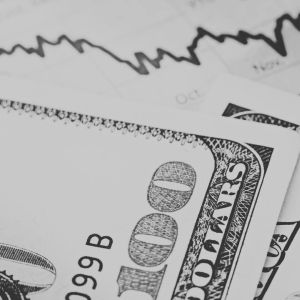Trump demands historic rate cut as inflation threat looms
3 min read
The US stock market just blew past every record in history, as the capitalization-to-GDP ratio hit 208% this week, jumping nearly 43 percentage points since April. That crushes the previous high of 206% from February and more than doubles the ratio from nine years ago. The last time things were this overheated was during the Dot-Com Bubble in 2000, and even then, the ratio only hit 142%. For reference, the average over decades sits around 85%. The S&P 500 rose 0.6% on Wednesday, and the Nasdaq Composite gained around 0.4%, while the Dow Jones added 84 points, that’s about 0.2%. The entire push came from the same sector that’s been running the show: tech. And at the center of it all was Nvidia, which has surged 4% and became the first company ever to cross a $4 trillion valuation. Big names like Meta Platforms, Microsoft, and Alphabet also gained, fueled by what traders called renewed “AI optimism.” Investors didn’t care about tariffs or rate chatter. They were chasing what was going up. Trump demands historic rate cut as inflation threat looms At the same time, President Donald Trump has demanded that the Fed should cut interest rates by more than 300 basis points, calling it “the only way to save the taxpayer from this absurd debt load.” If Jerome Powell actually delivers, this would be three times larger than the 100 bps cut from March 2020, which was already the biggest in US history. Trump pointed to the $1.2 trillion in annual interest payments on the national debt, saying, “We’re burning $3.3 billion a day just on interest. That’s robbery.” He argued that a 3% rate cut would save $360 billion per point per year, or $1.08 trillion annually. His numbers come from applying 1% to the full $36 trillion in US debt. But economists were quick to correct that only $29 trillion of that is publicly held, which is what actually matters. The average interest rate on that debt is about 3.3%. So even if rates on all of it dropped by 3%, the total savings would come to $870 billion per year. But there’s no way to refinance that overnight. Most experts say only 20% of it could be rolled over in the first year, bringing savings to around $174 billion in that timeframe. Assuming a similar 20% rollout over five years, total cumulative savings could touch $2.5 trillion. But the economic fallout would be massive. No single rate cut has ever exceeded 100 bps, not even in 2008. The largest one-time slash was in March 2020. Trump’s plan triples that, and he’s proposing it while the economy is growing 3.8% year over year, not shrinking. Markets could explode, but so will inflation and housing If the Fed actually cuts rates like Trump wants, the short-term impact would be clear. Asset prices would go vertical. Analysts say the S&P 500 could race past 7,000, gold would cross $5,000 per ounce, and oil would spike to $80 a barrel. Crypto would likely follow the same pattern, as it did in 2020 when stimulus and low rates fueled explosive gains. Real estate would also feel it hard. Mortgage rates could drop from 7% to 4%, but prices, already 50% higher since 2020, would surge another 25% or more. Any boost to affordability would get wiped out by rising home values. Renters and first-time buyers would be locked out of the market even faster than they already are. The US dollar would take a beating too. Analysts say a 10%+ decline is likely. That would stack on top of the -10.8% drop already seen in Q1 and Q2 2025, the worst six-month start for the dollar since 1973. A weaker dollar could help US exports a little, but it would make imports, fuel, and everything priced globally more expensive. Gold prices, already up 40% in the past year and 80% over the last five years, would accelerate even further. Inflation would spike. Economists say CPI would exceed 5%, erasing wage growth and hitting low-income families hardest. It would also kill any chance of the Fed keeping control over long-term inflation targets. And it all leads back to one thing. Even if rate cuts give the economy a sugar high, they don’t fix the core issue. As of May, the US Treasury recorded a $316 billion budget deficit, the third-highest on record. Trump’s critics inside the Beltway argue that “we have a spending problem, not a rates problem.” Lowering interest won’t fix the fact that the US keeps borrowing more than it can pay back. Cryptopolitan Academy: Tired of market swings? Learn how DeFi can help you build steady passive income. Register Now

Source: Cryptopolitan



